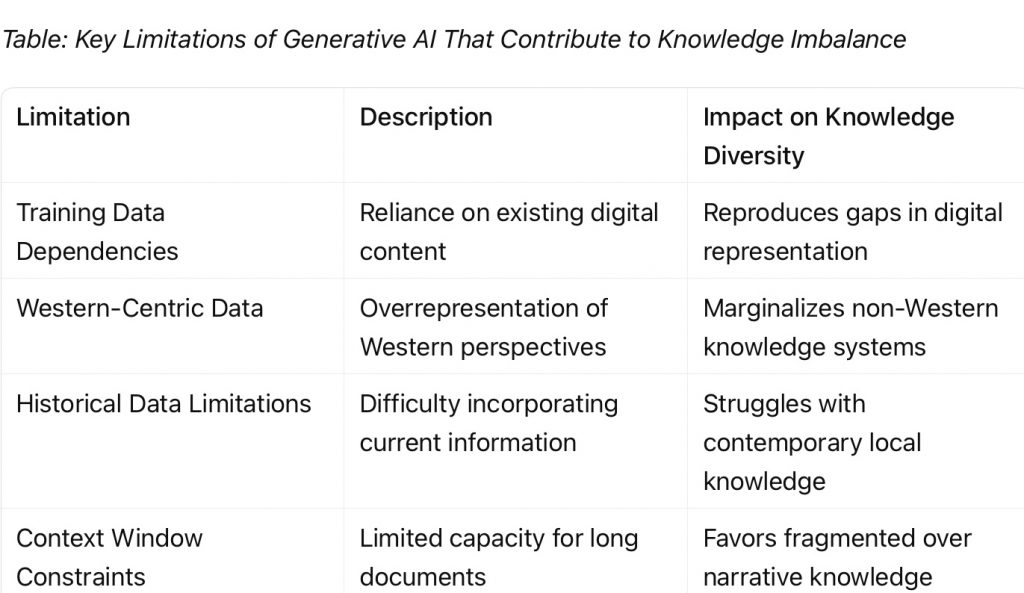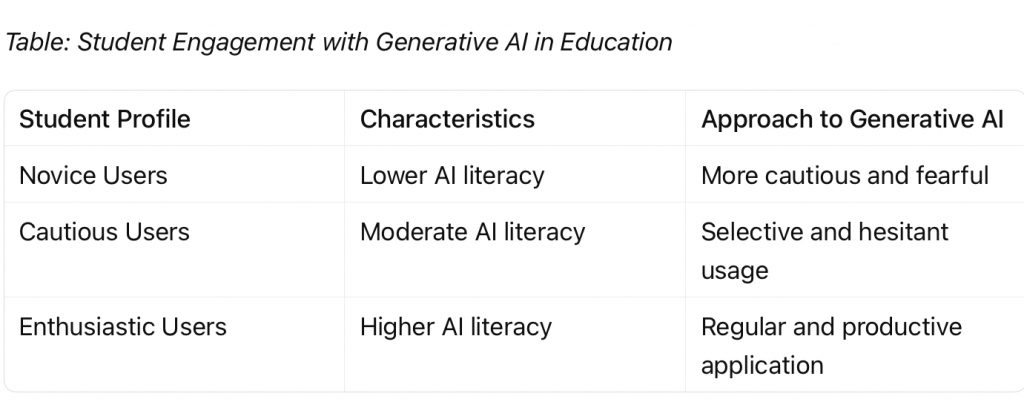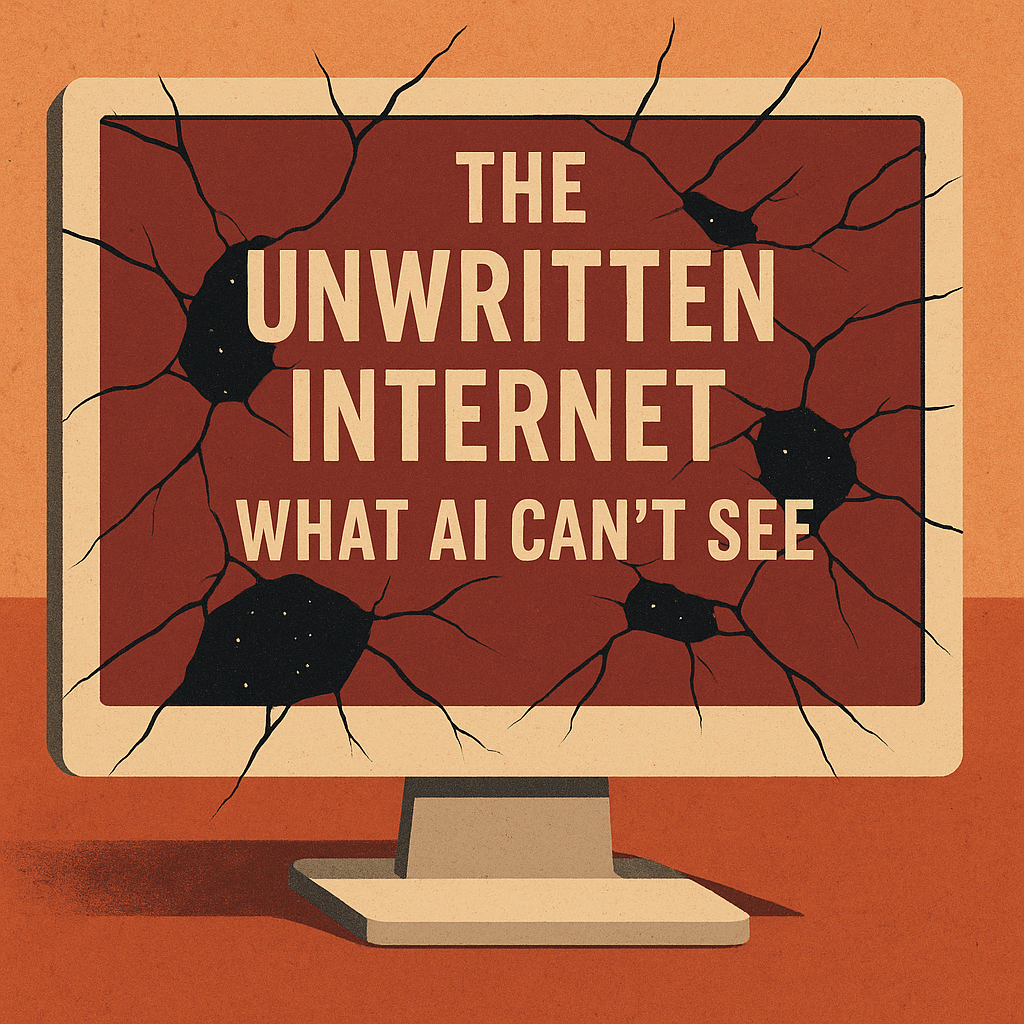**The Silent Imbalance: How Generative AI Is Erasing the World’s Knowledge Diversity
Analysis how generative AI entrenches knowledge hierarchies and erases diverse knowledge systems. The main contents of the essay are as follows:
· Introduction: Uses the Yellowstone wolf reintroduction story to illustrate ecological interconnectedness and introduces the parallel with AI knowledge systems.
· How AI learns and amplifies bias: Explains training data dependencies and the “hallucination” problem, showing how AI reproduces and amplifies existing biases.
· The language representation gap: Examines the stark inequality in AI’s language capabilities and its real-world consequences for non-dominant languages.
· Epistemological hegemony: Analyzes how AI privileges Western knowledge systems and marginalizes indigenous and local knowledge.
· Educational entrenchment: Discusses how AI use in education creates new digital divides and reinforces existing biases.
· Solutions and alternatives: Proposes technical, collaborative, and educational interventions to create more inclusive AI systems.
· Conclusion: Advocates for AI that serves as a bridge rather than a barrier between knowledge systems.
————————
Introduction: The Unseen Connections
When wolves were reintroduced to Yellowstone National Park after a 70-year absence, something remarkable happened. The wolves began preying on elk, which allowed overgrazed willow and aspen groves to recover. The returning trees stabilized riverbanks and created habitat for songbirds and beavers. The beavers built dams that formed ponds, supporting fish, amphibians, and other wildlife. Even the physical geography of the park changed as regenerating vegetation slowed soil erosion. This story of the Yellowstone wolves provides a powerful illustration of ecological interconnectedness—how each element in a system exists in relationship with others, often in ways invisible to the casual observer .
Just as natural systems depend on this delicate balance, so too does humanity’s collective knowledge. Yet today, a different kind of ecosystem—our digital knowledge repository—is being systematically stripped of its diversity. Generative artificial intelligence, trained on the imbalanced content of the internet, is accelerating this quiet erosion. When we ask ChatGPT about “favorite foods,” it overwhelmingly suggests pizza rather than biryani—not because biryani is less beloved, but because Western content dominates its training data. This seemingly minor imbalance reflects a much larger problem: AI systems are being designed in ways that privilege certain forms of knowledge while marginalizing others, with profound consequences for the preservation of human understanding.
How AI Learns and Amplifies Bias
Generative AI systems like ChatGPT learn by identifying patterns in massive datasets composed of digital content from the internet. The fundamental limitation of this approach is immediately apparent: these systems can only learn from what’s already digitized and available online. Their knowledge is confined to the existing digital corpus, complete with all its gaps, biases, and imbalances . This creates what researchers call “training data dependencies”—if something isn’t well-represented in the training data, the AI will struggle to understand or generate content about it.
The problem extends beyond mere gaps to active distortion. AI models frequently suffer from “hallucinations”—a industry term for when these systems generate fabricated content that appears plausible. These aren’t random errors but systematic distortions that often reflect the biases in their training data. When an AI “hallucinates,” it typically produces information that aligns with the most common patterns in its training corpus, further reinforcing dominant perspectives . The AI doesn’t generate truth; it generates what sounds plausible based on its training, making it particularly susceptible to reproducing and amplifying existing biases.
These systems face significant contextual and comprehension limitations. Large language models operate with limited “context windows,” meaning they can only process a certain amount of text at once. This constraint prevents them from fully understanding lengthy documents or complex narratives that require sustained attention to nuance—a particular challenge for knowledge traditions that emphasize storytelling and contextual understanding .
Table: Key Limitations of Generative AI That Contribute to Knowledge Imbalance

Limitation Description Impact on Knowledge Diversity
Training Data Dependencies Reliance on existing digital content Reproduces gaps in digital representation
Western-Centric Data Overrepresentation of Western perspectives Marginalizes non-Western knowledge systems
Historical Data Limitations Difficulty incorporating current information Struggles with contemporary local knowledge
Context Window Constraints Limited capacity for long documents Favors fragmented over narrative knowledge
Perhaps most concerning is how these technical limitations intersect with cultural bias. Most generative AI models are trained primarily on Western data, making them less relevant—and often outright inaccurate—for users from different cultural contexts . The models struggle to understand cultural nuances, leading to responses that range from mildly inappropriate to profoundly misleading when applied outside Western contexts.
The Stark Reality of the Representation Gap
The inequality in AI training data isn’t merely theoretical—it manifests in stark statistical disparities that reflect broader patterns of digital marginalization. Consider the case of Hindi, the third most spoken language globally with approximately 7.5% of the world’s population speaking it. Despite its substantial speaker base, Hindi accounts for a mere 0.2% of Common Crawl’s data, one of the largest public datasets used to train AI systems . This dramatic underrepresentation means that Hindi speakers encounter AI systems that struggle to understand their language and cultural context, effectively locking them out of the AI revolution.
This pattern repeats across the global linguistic landscape. In the computing world, approximately 97% of the world’s languages are classified as “low-resource”—a technical designation meaning they lack sufficient digital content for effective AI training . This terminology is misleading when applied beyond computing contexts; many of these languages have millions of speakers and centuries-old literary traditions. They’re not “low-resource” in any meaningful human sense—they’re simply underserved by the digital ecosystem.
The consequences of this representation gap extend far beyond inconvenience. A 2020 study found that 88% of the world’s languages face such severe neglect in AI technologies that bringing them up to speed would require “herculean—perhaps impossible—efforts” . The window for preserving these knowledge systems may be closing rapidly as AI becomes the primary interface to information for more of the world’s population.
The imbalance becomes self-reinforcing through what researchers call the “feedback loop of statistical prevalence.” AI systems are optimized to predict the most probable next word based on their training. This technical requirement has cultural consequences: concepts that appear more frequently in training data become more strongly encoded in the model, leading the AI to disproportionately emphasize high-likelihood responses even beyond their actual prevalence . When pizza appears sixty times more often than biryani in responses about favorite foods, it’s not because pizza is objectively better, but because statistical patterns dominate over cultural truth.
The Epistemological Hegemony in AI Systems
Beyond mere content gaps, AI systems encode a deeper problem: they privilege certain ways of knowing while marginalizing others. This represents a form of epistemological hegemony—the dominance of particular knowledge systems not through their inherent superiority but through their embeddedness in powerful institutions and technologies. Generative AI primarily reflects Western cultural values and epistemological frameworks, positioning them as universal while framing alternative knowledge systems as niche or specialized .
The effects of this hegemony extend to what constitutes “valid” knowledge within AI systems. Indigenous knowledge—developed over centuries of careful observation and intergenerational transmission—often exists outside the digital realm and thus outside the AI’s training data. When a language becomes marginalized, the specialized knowledge embedded within it often disappears as well. One study on medicinal plants in North America, northwest Amazonia, and New Guinea found that more than 75% of the 12,495 distinct uses of plant species were unique to just one local language . This represents not merely cultural loss but the erasure of practical wisdom with potential global benefit.
The problem is particularly acute in domains that require complex contextual understanding. AI systems struggle with what anthropologists call “situated knowledge”—understanding that is deeply rooted in specific places, experiences, and relationships. Place-based research, which explores the particularities of specific landscapes as dynamic social-ecological systems, offers insights that global models often miss . Yet this locally grounded knowledge frequently remains isolated from AI systems, creating what researchers call “siloed knowledge”—valuable understanding that remains inaccessible to broader applications .
This epistemological narrowing has practical consequences. Consider architectural knowledge: glass buildings, originally designed for colder, low-light climates, have become symbols of modernity worldwide. Yet studies show that in places with intense sunlight, glass facades lead to significant indoor overheating and thermal discomfort, even with modern glazing. Rather than conserving energy, these buildings demand more to remain cool. This represents a disregard for localized building knowledge that had evolved solutions appropriate to specific climatic conditions—knowledge that rarely appears in AI training data dominated by Western architectural traditions.
Generative AI in Education: Entrenching Divides
As generative AI becomes integrated into educational systems worldwide, its knowledge biases take on heightened significance. Research reveals concerning patterns in how students interact with these systems. Around half of all ChatGPT queries are for practical guidance or information-seeking, positioning these systems as authoritative sources of knowledge . This trend is particularly pronounced among younger users: combined 18-24 and 25-34 year-olds constitute more than half of ChatGPT’s user base .
The integration of AI in education creates new forms of digital inequality. Studies identify three distinct student profiles: novice, cautious, and enthusiastic users, with variations in knowledge and use of ChatGPT reflecting existing digital divides . Students with lower AI literacy tend to be more cautious and fearful of GenAI, while those with higher AI literacy use these tools more productively, potentially widening educational gaps .
Perhaps most concerning is how these systems potentially undermine the development of critical thinking skills. As one researcher notes, “LLMs don’t generate truth. They generate what sounds plausible” . When students use AI tools that deliver polished, confident responses regardless of accuracy, they may struggle to develop the ability to interrogate sources, evaluate evidence, and apply academic judgment. The fluency of AI responses often masks their potential inaccuracy, leading students to mistake linguistic sophistication for factual correctness .
This educational dynamic creates what researchers call a confirmation bias feedback loop. When students ask leading questions like “Why is school uniform outdated?” or “Why is homework unnecessary?”, the AI typically doesn’t question the premise but mirrors it in polished, confident language that students are likely to trust . Without explicit instruction in how to interrogate AI outputs, students may experience a decline in critical reasoning skills precisely when they need them most in our increasingly complex information environment.
Table: Student Engagement with Generative AI in Education
Student Profile Characteristics Approach to Generative AI
Novice Users Lower AI literacy More cautious and fearful
Cautious Users Moderate AI literacy Selective and hesitant usage
Enthusiastic Users Higher AI literacy Regular and productive application

Solutions: Toward Pluralistic AI Ecosystems
Addressing the knowledge gaps in AI requires both technical interventions and broader cultural shifts. Technically, researchers are exploring methods like few-shot learning and transfer learning that could help models learn more effectively from limited data . More fundamentally, there’s a growing recognition that we need intentional efforts to diversify training datasets, though this presents significant practical challenges given the scale of current gaps.
Beyond technical fixes, a crucial step involves creating participatory frameworks that enable communities to contribute their knowledge to AI systems on their own terms. This aligns with approaches like “place-based social-ecological research,” which emphasizes the importance of local context in understanding sustainability challenges . Such approaches recognize that solutions cannot be simply scaled up from single cases but require networks of knowledge exchange that respect local specificity while building global understanding.
In education, we need what some researchers call “Democratic Digital Defence Teams”—initiatives that bring together diverse stakeholders to develop digital literacy skills focused specifically on critiquing AI systems . This includes teaching students to understand AI limitations, recognize cultural biases in outputs, and supplement AI-generated information with community-based knowledge sources. These skills must become part of mainstream education rather than specialized knowledge accessible only to technical elites.
There are promising models for more inclusive knowledge systems. Cross-disciplinary collaborations that bring together researchers from different fields—such as environmental scientists, indigenous scholars, and AI developers—can help create more robust and inclusive knowledge frameworks . Similarly, supporting community-based documentation of local knowledge can help preserve endangered understanding before it disappears.
Fundamentally, addressing the knowledge erosion caused by current AI systems requires rethinking the very values embedded in our technological infrastructure. As one researcher notes, “We need excellent publications like this to alert us to the risks, to inform us about the massive benefits to our health and lives which harvesting data can bring, and to feed into thinking about how we can regulate so that we control our futures” . This involves asking not just what AI can do, but what it should do—and whose knowledge it should prioritize.
Conclusion: The Choice Before Us
The story of the Yellowstone wolves offers more than just a metaphor; it provides a blueprint for how we might address the knowledge crisis in AI. The wolf reintroduction succeeded because ecologists understood the profound interconnectedness of the natural system—how the absence of one species reverberated throughout the entire ecosystem. Similarly, addressing the knowledge gaps in AI requires recognizing the deep interconnections between different forms of knowledge and how the absence of certain perspectives diminishes our collective understanding.
The choice before us is not whether to embrace AI technologies but what values they will encode and whose knowledge they will prioritize. As generative AI becomes increasingly embedded in education, research, and daily life, we stand at a crossroads: we can allow these systems to continue homogenizing human understanding, or we can deliberately design them to serve as bridges between knowledge traditions rather than instruments of cultural erosion.
The work ahead is substantial, requiring technical innovation, policy development, educational reform, and—most importantly—a fundamental shift in how we value different forms of knowledge. It demands that we recognize that the disappearance of indigenous knowledge about medicinal plants or local building techniques represents not merely a cultural loss but a diminishment of our collective ability to address complex challenges from climate change to public health.
In the end, creating AI systems that honor the full diversity of human understanding is not merely a technical challenge but a moral imperative. As the writer Dorothy Byrne reminds us, digital technologies can bring both tremendous benefits and significant risks . The path forward requires vigilance, deliberation, and an unwavering commitment to ensuring that our technological future includes space for all the ways of knowing that make us human. The true measure of AI’s intelligence will not be its ability to mimic human speech but its capacity to honor the diverse ways humans have always made sense of their world.
